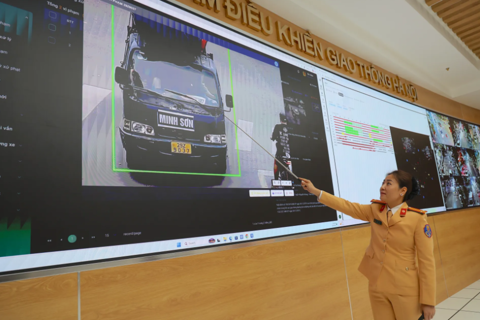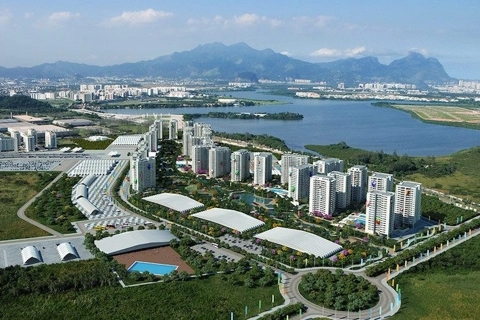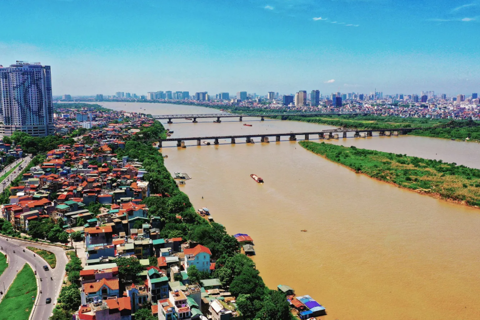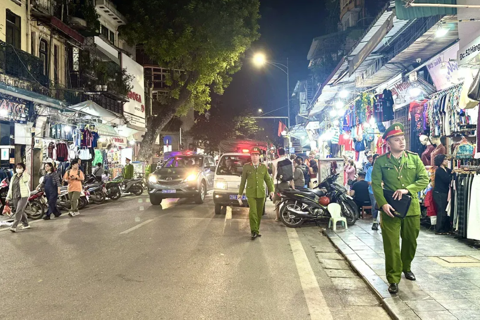Administrative reforms key for Hanoi's better management work
The one-stop-shop model has been one of the key solutions to improve efficiency in the operation of local apparatus.
Administrative reform has long been considered key for Hanoi to gradually meet the expectations of businesses and citizens.
| Locals at Soc Son District People's Committee. Photo: Pham Hung/ The Hanoi Times |
Modern one-stop-shop model
Since late 2021 to date, the Hanoi People’s Committee has issued nine directives on the implementation of the one-stop-shop model as part of the process to improve efficiency in administrative reform.
A simplified administrative process adopted under the one-stop-shop model has been seen as a key factor leading to higher public satisfaction with the performance of the state apparatus.
In districts such as Hoan Kiem, Ha Dong, Thanh Oai, Quoc Oai, Dong Da, or in the departments of Planning and Investment, Transportation, Construction or Finance, the authorities have also made electronic devices available to residents to perform on-site online public services and a public satisfaction survey.
Vice Director of the Department of Labor, War Invalids and Social Affairs Hoang Thanh Thai said in the first 10 months of 2022, the agency received nearly 34,000 administrative applications, of which 31,800 were handled on time, over 2,215 are under processing, and none are backlogged.
These efforts have resulted in Hanoi's public administrative reform index (Par Index) ranking 10th out of 63 provinces and cities, with a score of 88.54 and improvements seen in the quality of state governance; administrative reform; public finance reform and modernization; and assessment of the impacts of administrative reform on people, organization and socio-economic development.
Hanoi also scored over 80% on the Satisfaction Index of Public Administration Services (SIPAS) in 2021, marking the fourth consecutive year that the city continued to stay among the top-tier ranking.
Further simplification of administrative procedures
This year, the municipal People’s Committee approved plans to simplify four administrative procedures under the authority of the Department of Construction, 22 under the Department of Planning and Investment, and four under the Department of Planning and Architecture.
The city also published a list of procedures in fields of education and training, social welfare, natural resources, and environment that are subject to a shorter processing time of 0.5 to 4 working days.
Vice Chairman of the Hoan Kiem District People’s Committee Nguyen Anh Quan said the locality has been applying IT in administrative reform and processing requests from locals, focusing on initiatives to shorten the time in resolving administrative procedures.
According to Quan, a highlight of the process has been the implementation of the pilot model for “no-delay administrative procedures” at 18 wards under the district, for which any request would be processed immediately for greater convenience and satisfaction from the public.
Meanwhile, the Ha Dong District People’s Committee has also cut the processing time of 248 out of the total 271 administrative procedures, or 91.5% of the total.
Another key step in improving public satisfaction is to take public services online, for which the city is developing a database on citizens, e-identification, and verification under the national digital transformation drive during the 2022-2025 period, with a vision to 2030.
Hanoi also plans to further integrate public services into the national online public services portal, with 928 procedures expected to go online this year.
This year, Hanoi targets the PAR Index score to reach 92.55, four points higher than the 88.54 points recorded last year and moving up one or two places in the ranking. To realize this goal, the municipal People’s Committee has released an action plan to maintain the last year's high scores of sub-components and assign the Department of Internal Affairs to map out measures and address fields in which modest grades were scored. Among the key criteria, the city’s authorities stressed the significance to improve the public satisfaction rate in receiving and handling civil complaints by at least 3-5% compared to last year. |

.jpeg)









